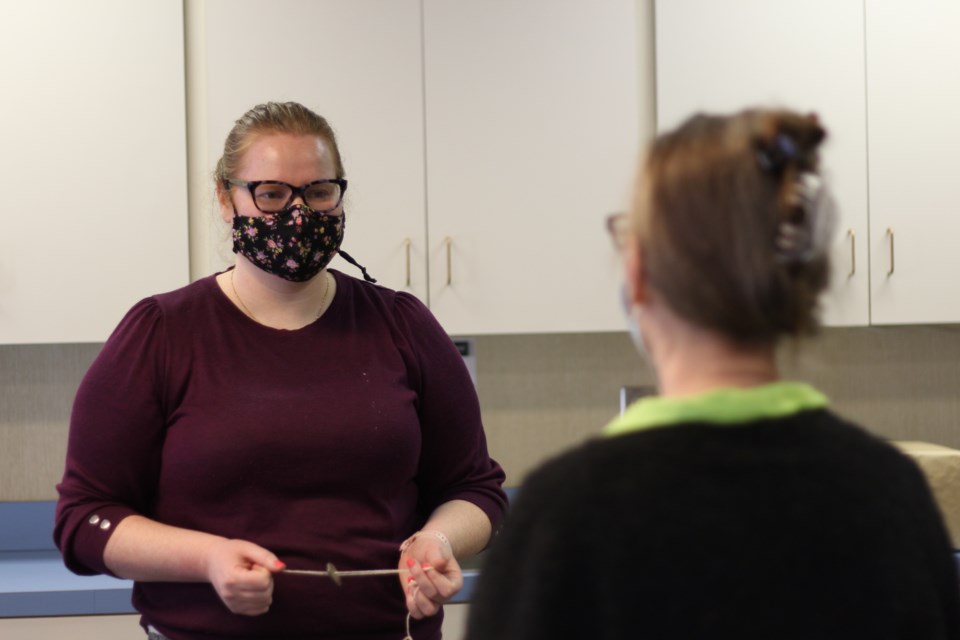YORKTON – A presentation at the Western Development Museum showcased the toys and recreations of historical youths on the Saskatchewan prairie.
"It's a little presentation just talking about the toys that we have in our collection," said Solange Massicotte, Education and Public Program Coordinator for the Western Development Museum.
"We're discussing different handmade toys, how they were made, or something small that was purchased," said Massicotte, adding, "[The presentation is meant] to bring nostalgia, so maybe some people might recognize some of the toys they used to play with."
Many of the toys of the past in rural Saskatchewan were made from recycled goods. For instance, in the winter, used jam cans would be filled with rocks to add weight to them. The weighted cans would then be slid across pond ice to create a game akin to curling.
"It's how families and settlers from one hundred years ago used to play," said Massicotte.
A button whizzer was made of string and a solo clothes button looped through thread holes of the button. When spun on the string in quick succession the button would produce a whizzing sound.
Sock monkeys were made from old wool socks, hanky dolls of recycled hanky material. A rag ball is just as you'd have guessed: recycled rags formed into a ball and wrapped in string to hold it together.
Not all of the toys were home-made, some were purchased through Eaton's Catalogues. For example, a stereoscope was an early form of three-dimensional viewing. "A typical stereoscope provides each eye with a lens that makes the image seen through it appear larger and more distant," as noted in the Wikipedia article for stereoscopes.
The presentation is part of the museum's exhibit, 'In a Prairie Attic'. "This exhibit showcases more than 200 artifacts which speak of growing up during the settlement period of Saskatchewan. The artifacts tell the story of the Bladon family, a couple and their seven children who farmed near Lang, Saskatchewan from 1910 to 1995. The family members were savers. Five of the seven children lived in the family home for their whole lives. The toys provide a fascinating look at prairie childhood in the early decades of the 20th century," as noted in the exhibit's description on WDM.ca
"Museum staff made the trip to Lang in 1995 and were delighted with what they found. Tucked away in the attic and veranda were dozens of toys, children’s books, games and playthings of all description," according to WDM.ca
"The family kept the toys in mint condition for many years," said Massicotte, adding, "the toys were typical of what shoppers bought in the Eaton's catalogue or SEARS wish book.
Presentations like this have become a regular occurrence for the museum, though up until February 20th they had been done online due to the ongoing nature of the COVID-19 pandemic.
"Normally these presentations are online, but this time we tried to do something in person," said Massicotte, noting, "the next presentation is virtual, it won't be in person, and it's on Scandinavians in Saskatchewan."
For more information on when and where and how to attend, visit WDM.ca/Yorkton.




